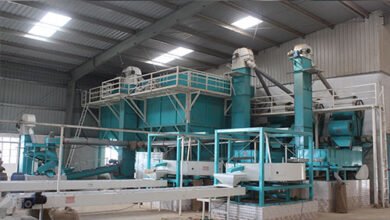
What are the Graphene Products and its Applications?
Graphene products are materials that can be used for many purposes. It is transparent, strong, and conductive. Depending on how it is treated, it can be stiff or flexible. It is also one of the fastest electrical and thermal conductors. Graphene is also an excellent barrier. It is relatively easy to produce.
Graphene is a strong, light, transparent, and very conductive material
Its properties make it an excellent conductor of electricity and heat. Its transparency and high strength make it useful in many applications. In addition, graphene is optically transparent and dense, which is important in a conductor.
Its strong, transparent, and conductive properties make it an excellent material for electronic applications. The electrical conductivity of graphene means it can carry electricity, while its electronic properties involve manipulating the flow of electrons. Graphene also has other amazing properties, such as its ability to move electrons much faster than those in silicon. This ability could make computers faster and more energy efficient.
Graphene suppliers have recently ramped up their production, which has helped reduce the material’s costs. It is a two-dimensional material made from carbon atoms arranged in a hexagonal pattern. Graphene is incredibly strong, and thin, and has a range of useful applications in the aerospace and electronics industries.
Although there are still many unanswered questions surrounding graphene, it is one of the strongest, light, most transparent, and most conductive materials known to man. It can act as a transistor, sensor element, and lateral heat-spreader. Graphene field-effect transistors are already available, demonstrating their ability to work with very low noise. Moreover, graphene is much faster than silicon, which makes it suitable for terahertz computing.
It is a substitute for indium tin oxide
It is currently not flexible, and its main limitation is its cost. Ultimately, graphene could replace indium tin oxide, a standard material for liquid-crystal displays. This would allow manufacturers to avoid the use of expensive metals and reduce their energy consumption.
It is also an excellent electrode material for transparent organic solar cells. Graphene can be both flexible and transparent, which makes it a viable substitute for indium tin oxide. It can also be used for wearable electronic devices. Researchers are now investigating hybrid TCE films with graphene to improve TCE performance.
A new study has shown that graphene is an effective substitute for indium tin oxide in organic light-emitting diodes. The researchers used a metal-organic chemical vapor deposition technique to deposit the graphene on a transparent substrate. The graphene-based OLED performed just as well as the indium-tin-oxide-based counterpart.
Indium tin oxide (ITO) is a transparent conducting alloy with a low melting point. It is an n-type semiconductor with a large bandgap of around 4 eV. Its optical transmittance can reach over 80%.
The use of indium in ITO production is more resource-intensive than that of graphene. In addition, graphene production requires up to 300 times more copper than it does to produce ITO. Therefore, the substitution of ITO with graphene may be more environmentally friendly than ITO, as it may increase the production of liquid-crystal displays and other graphene-based technologies. It could even spur the development of new energy technologies.
However, the current density and irradiance of graphene are lower than those of ITO. The reason for this difference is the relatively high sheet resistance of graphene.
It is compatible with human osteoblasts
These compounds share certain properties with these cells, including the ability to stimulate cell growth and proliferation. These properties make graphene products potentially useful for regenerative medicine and bone regeneration.
Another potential application for graphene is in cancer research. By detecting tumor cells in the early stages of their development, graphene can intervene to prevent tumor formation. It can also promote autophagy, which leads to the destruction of cancer cells.
It also demonstrated a positive effect on bone formation in a mouse calvarial defect model. Further, graphene-coated titanium implants are also compatible with human osteoblasts, which are the primary cells in bone regeneration. Moreover, you can visit Graphene Products Suppliers to get more ideas about graphene products.
However, there are still questions regarding graphene bio toxicity. While toxicity is unlikely to occur at high concentrations, some preliminary studies have revealed that graphene may be toxic at lower concentrations. Studies evaluating graphene in tissue engineering typically assess cell responses in vitro. Although they report a positive effect, the duration of these studies is often insufficient to mimic physiological conditions.
It is made from nickel foils
Graphene can be made from nickel foils or soybean oil. This method is able to produce multilayer graphene films, which are about 500 to 800 nm thick. However, the graphene growth is not uniform, but rather patchy and irregular in appearance.
This method produces a film with 6 layers, which is equivalent to the thickness of human hair. The resulting film has similar properties to that of steel. However, the method eliminates the need for intermediate sacrificial substrates and allows a higher degree of efficiency.
In this process, a metal substrate reacts under a vacuum with volatile carbon-containing precursors to form a thin layer of graphene. The technique is effective for producing large areas of graphene, but it also produces imperfections in the material that degrade its performance.
Thanks for visiting isposting




